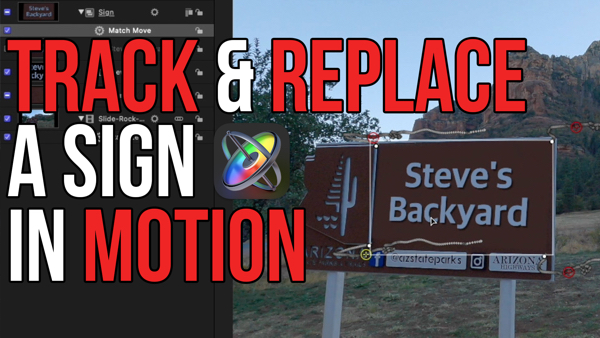Learn to Create a Streaming Data Effect
In this Episode Mark Spencer teaches you how to create a Streaming Data Effect using Replicators, and parameter Behaviors.
Continue your study of this subject with Creating Replicator Effects in Motion 5.4.
In this episode, I’ll show you how to create this streaming data effect.
Here we are once again in Motion with an empty project. To get started, I’ll go to the Library, to Generators, to Text Generators, select the Numbers generator, and click apply.
Now, In the Inspector, for the Text Generator, in the Format section, I’ll choose a digital looking font, and set the size to 48.
In the Generator section, I’ll set the Start value to 100, the End value to 999, check the Random check box, and set the Random Hold Frame to 5.
Now if I deselect the layer and play, I get a new random 3-digit number every 5 frames.
To create copies of this animated number, I’ll move the playhead back home, reselect it. and press the L key to replicate it.
In the Replicator Inspector, in the Replicator Controls, I’ll set the Size to 2200, the columns to 15, and the rows to 60. Then down in the Cell Controls, I’ll check the Random Start Frame check box. I now have columns of random 3-digit numbers.
To add some color, I’ll change the Color Mode to Pick From Color Range, open the gradient editor, then right-click the color tags and choose a bright blue and bright green color.
To change our view, I’ll select the Adjust 3D Transform tool in the Toolbar, then rotate the replicator on each axis. Then I’ll drag on the arrows to make it fill the frame.
If I play back now, each number changes but they don’t move. To make them move, I’ll go to the Filters shortcut menu and choose Tiling > Offset. To animate this filter, in the Filter Inspector, I’ll right-click the Vertical Offset parameter and choose Parameter Behavior > Oscillate. In the Behaviors Inspector, I’ll set the Wave Shape to Sawtooth and the Speed to 2. Now when I play, the columns of numbers slide up the screen as they change.
To make them blink on and off, I’ll go to the Behaviors shortcut menu and select Replicator > Sequence Replicator.
In the Inspector, I’ll add the Opacity parameter and set it to 0. Then I’ll set the Sequencing to Through, the Spread to 20, and the Loops to 20. If I play now, I get an expanding black ring, so I’ll select the Replicator Inspector and check the Shuffle Order check box.
To add depth to the scene, I’ll select the Replicator in the Layers list, press K to make a clone, press Command-left bracket to move the clone below, then in the Inspector, I’ll double it’s size. From the Filter shortcut menu I’ll select Blur > Gaussian blur and in the Inspector I’ll increase the amount to about 40.
Click the subscribe button below. If you have an idea, comment or suggestion, leave those below as well. Go to rippletraining.com for fast professional training on final cut pro, motion and davinci resolve from industry professionals.
Here we are once again in Motion with an empty project. To get started, I’ll go to the Library, to Generators, to Text Generators, select the Numbers generator, and click apply.
Now, In the Inspector, for the Text Generator, in the Format section, I’ll choose a digital looking font, and set the size to 48.
In the Generator section, I’ll set the Start value to 100, the End value to 999, check the Random check box, and set the Random Hold Frame to 5.
Now if I deselect the layer and play, I get a new random 3-digit number every 5 frames.
To create copies of this animated number, I’ll move the playhead back home, reselect it. and press the L key to replicate it.
In the Replicator Inspector, in the Replicator Controls, I’ll set the Size to 2200, the columns to 15, and the rows to 60. Then down in the Cell Controls, I’ll check the Random Start Frame check box. I now have columns of random 3-digit numbers.
To add some color, I’ll change the Color Mode to Pick From Color Range, open the gradient editor, then right-click the color tags and choose a bright blue and bright green color.
To change our view, I’ll select the Adjust 3D Transform tool in the Toolbar, then rotate the replicator on each axis. Then I’ll drag on the arrows to make it fill the frame.
If I play back now, each number changes but they don’t move. To make them move, I’ll go to the Filters shortcut menu and choose Tiling > Offset. To animate this filter, in the Filter Inspector, I’ll right-click the Vertical Offset parameter and choose Parameter Behavior > Oscillate. In the Behaviors Inspector, I’ll set the Wave Shape to Sawtooth and the Speed to 2. Now when I play, the columns of numbers slide up the screen as they change.
To make them blink on and off, I’ll go to the Behaviors shortcut menu and select Replicator > Sequence Replicator.
In the Inspector, I’ll add the Opacity parameter and set it to 0. Then I’ll set the Sequencing to Through, the Spread to 20, and the Loops to 20. If I play now, I get an expanding black ring, so I’ll select the Replicator Inspector and check the Shuffle Order check box.
To add depth to the scene, I’ll select the Replicator in the Layers list, press K to make a clone, press Command-left bracket to move the clone below, then in the Inspector, I’ll double it’s size. From the Filter shortcut menu I’ll select Blur > Gaussian blur and in the Inspector I’ll increase the amount to about 40.
Click the subscribe button below. If you have an idea, comment or suggestion, leave those below as well. Go to rippletraining.com for fast professional training on final cut pro, motion and davinci resolve from industry professionals.




